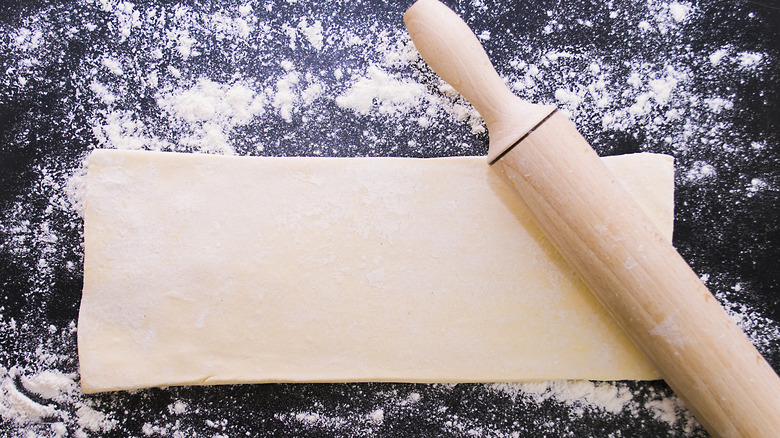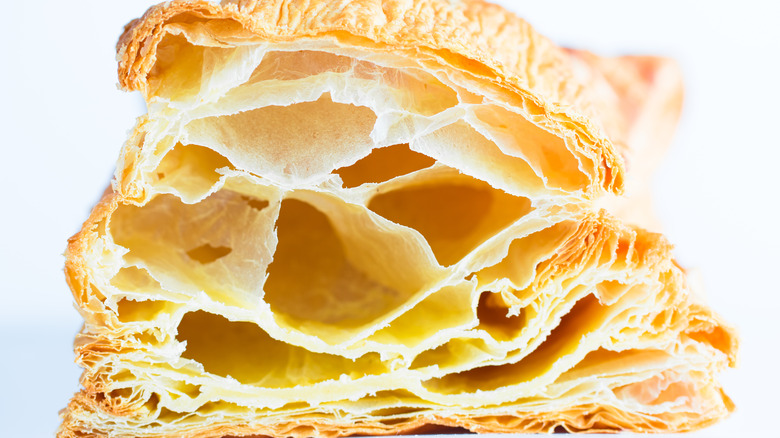Don't Make This Big Mistake When Rolling Puff Pastry
If you grew up in a family that loved to use the kitchen, the odds are that there would be very few things you didn't make from scratch. Tortillas were never store-bought but instead pressed flat to the griddle. Doughnuts were rolled and fried in vegetable oil. Pasta was kneaded on the counter and pressed through a die extruder, and when it came to desserts, pie crusts and puff pastry were always hand-made and extra buttery.
Puff pastry may not have been an everyday sort of baked good in your home growing up, but whenever tarts or canapés are called for, you might very well be tempted to make it yourself instead of turning to the dry, easy-to-break stuff you can get at the store. Puff pastry, aka pâte feuilletée, is meant to be light, buttery, and flaky upon baking, but like with most all pastries, puff pastry can be temperamental and tricky to perfect. Little mistakes can throw off your puff pastry, and the lamination process, when butter is layered between the dough in thin sheets, can be grueling, to say the least, via Baking a Moment. But while everyone will tell you to worry about keeping the butter cool and to keep from undercooking the dough, something equally as important goes overlooked.
Stay away from the edge!
According to the Great British Chefs, we can thank a Frenchman named Claude Gelée for the invention of puff pastry in 1645. He laminated the dough he had been working on in an attempt to bake a rolled butter cake and instead made the world's first puff! The bread is made of surprisingly few ingredients: flour, water, salt, and butter, and the dough is mixed, chilled, and folded over itself multiple times. To make proper puff pastry sheets, you must eventually roll out the dough on a well-floured and cool surface, but this is where people make the unforgivable mistake of flattening the edges of the pastry.
America's Test Kitchen explains that if you use a rolling pin and pass over the edge of the dough, you will destroy the natural rising of the pastry before it even enters the oven! To keep the "puff" in puff pastry, you must not roll over the edges of your dough; instead, roll out from the center of the dough. When you eventually cut your pastry into shapes or sheets, Puff Pastry recommends using a sharp knife to cut straight down so that the edges of the pastry don't mesh together. Keeping the pastry's layers separate ensures that classic puff characteristics and rolling over the edge of the pie will destroy it!

